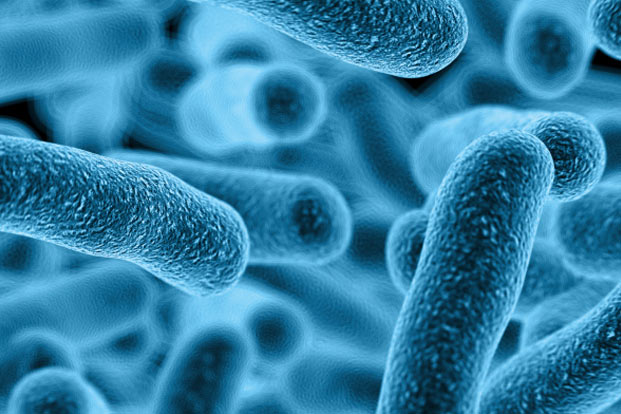It’s the day and age of antibacterial everything. We see these words on soaps, household cleaners and even feminine products.
As a result, we equate bacteria with all things bad. But could there actually be good bacteria too?
The answer is yes. And many of these little rascals are needed for the human body to function properly.
Healthy bacteria are an essential part of balance and wellness. In fact, “good bacteria” are the body’s front line of defense against “bad bacteria.”
Good bacteria belong to a group of microorganisms called probiotics. According to the Mayo Clinic, probiotics aren’t necessarily needed by the body. That said, they can be extremely beneficial.
Probiotics can be found in a number of foods. The most popular of these is good old yogurt. Yogurt is rich in many kinds of probiotics. They also can be found in whole grains, bananas, onions, garlic, honey and artichokes. Plus, probiotics can be found in dietary supplements designed with this bacteria in mind.
Following are five healthy bacteria and bacterial groups that can maintain health, digestion and so much more.
1. Lactobacillus acidophilus
L. acidophilus is often referred to as the most commonly known “good bacteria.” This necessary knight is generally found in the mouth, intestines and vagina. (Yes, there is healthy bacteria “down there.”)
It’s a surefire win when it comes to health because it produces lactase (which breaks down the sugars found in milk) as well as vitamin K. In addition, it works tirelessly on a daily basis to protect against its natural enemies — disease-causing “bad bacteria.”
The most popular food that L. acidophilus is found in is yogurt. However, it can also be found in kefir, soy foods and even pickles.
This bacterial rock star is the first line of defense for the gut because it breaks down food in the intestines. Consequently, it creates a less-than-hospitable environment for “bad bacteria.” The result is better gut health and digestion.
Studies show that L. acidophilus also may be helpful in managing Type 2 diabetes. In a double-blind controlled trial, participants who consumed probiotic yogurt containing this bacteria for six weeks experienced a 4.54 percent decrease in total cholesterol and a 7.45 percent decrease in LDL-C when compared to a control group.
Consequently, it was determined that probiotic yogurt containing L. acidophilus may contribute to the improvement of cardiovascular disease risk factors among those with Type 2 diabetes.
This bacterial bad boy is also helpful in maintaining “good bacteria” often killed off by antibiotics. That’s the reason those in the health field tell patients to seek out yogurt containing L. acidophilus when taking these medications.
Good stuff, huh? Thanks, L. acidophilus.
2. Streptococcus thermophiles
S. Thermophiles is commonly used in starter cultures for milk and cheese products, and it’s gained recent popularity due to its essential role in gut health.
This bacterial good guy acts as a defense against viruses known to cause diarrhea in infants. One study showed that babies who consumed formula with this bacteria added had a reduction in virus-caused diarrhea.
Studies also show that probiotic drinks containing S. thermophiles can assist in reducing diarrhea caused by antibiotics. And in combination with other probiotics, S. thermophiles can reduce the incidence of AAD (antibiotic-associated diarrhea) if routinely used in patients who are older than 50.
Makes you want to ramp up on S. Thermophiles, doesn’t it?
3. Faecalibacterium, Lachnospira, Veillonella and Rothia (Flvr)
Four big words, one ultimate accomplishment. These four good bacteria combined have been front and center in recent news. That’s because they may help prevent asthma.
According to the BBC, a recent study of 319 children demonstrated a higher risk of asthma if these four bacterial warriors were missing.
Dr. Stuart Turvey, a researcher on the product, tells the BBC, “Our longer-term vision would be that children in early life could be supplemented with Flvr to look to prevent the ultimate development of asthma.”
No one wants to see a child suffer from asthma. This discovery is nothing short of awesome.
4. L. bulgaricus
L. bulgaricus plays a large role in the flavor and smell of yogurt. In addition, it links up with other probiotics to help prevent yeast infections. This makes it an essential part of female health and wellness.
That’s because the vagina is a natural host to bacteria from the Lactobacillusgenus family. These “good bacteria” make the body’s environment unfriendly for bad bacteria to grow. This is partly due to a production of lactic acid and hydrogen peroxide.
So next time you feel a yeast infection coming on, remember this bacterial hero. Three cheers for L. bulgaricus. We’re glad to be your host.
5. Bifidobacterium
Bifidobacteria lives in the intestines. This group of bacteria is used to treat many digestive and intestinal conditions.
One such condition is diarrhea in infants and children. It also can be used to treat adult traveler’s diarrhea, which makes it an essential part of any trip.
Further, bifidobacteria can be used to restore “good bacteria” found in the gut that have been killed off for many reasons, including radiation, chemotherapy and antibiotics. It has been used to treat a bowel disease called ulcerative colitis and a condition that sometimes develops as a result of surgery for ulcerative colitis called pouchitis.
Bifidobacteria is also used to prevent necrotizing enterocolitis, a bowel infection that occurs in newborns. Plus, it’s useful in treating flu-like symptoms in children exposed to group environments. Good to know if daycare is a part of your child’s daily routine.
But that’s not all. Bifidobacteria is also used for the following array of conditions: colds, flu, hepatitis, breast pain, lactose intolerance, mumps, Lyme disease, cancer, boosting the immune system, lowering cholesterol, and of course, yeast infections.
That’s one heck of a good bacteria.
Now you’re in on the secret that just might improve your health. Bacteria aren’t all bad. Next time you question bacteria, remember that many of these microbes are your friends.

Leave a Reply